Class Write Up: Three Years of Learning
Creative Founder is in many way the anti-foundations of interaction design.It has no interest in designing interfaces, or usability (except as a means to an end.) Yet it is the ultimate design class, using design methodologies to understand customers and buyers, and to speak value in their language, and to provide change in their lives.
Creative Founder was the first class I taught at CCA, when it was called Designer as Founder. I suggested teaching a startup class to the chair of the department because I believe designers should understand business. I suspected designers would resist taking a class that admitted it was teaching them business, but would flock to sexy start-up land. It’s been waitlisted every year, though no longer for the original reasons. It has developed the reputation of being ridiculously hard, and the class that gets you ready for thesis, and then for life.
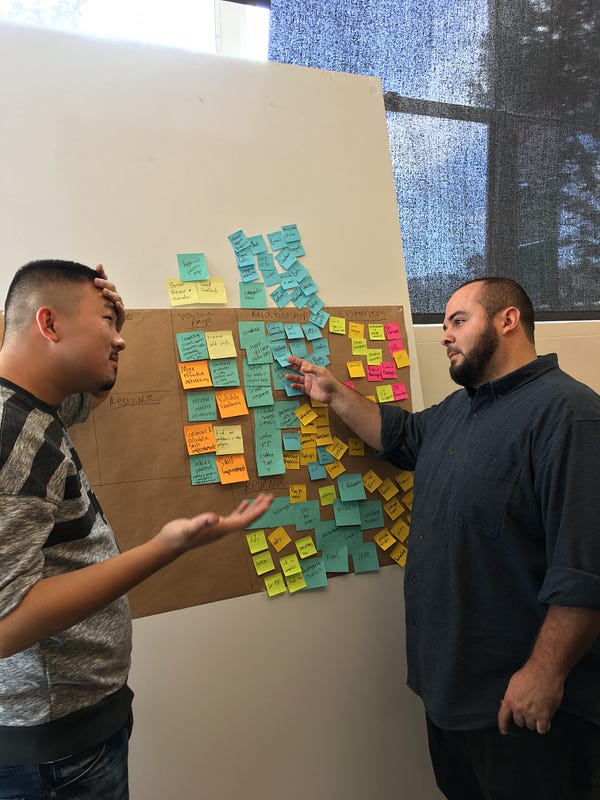
The first one was spring of 2014, the next was spring of 2015, then it moved to fall 2015 changing its name, and settled into its rhythm 2016 and now 2017, making this fall the 5th instantiation (it will be the first co-taught, with the redoubtable Kate Rutter .) In 2015, I modified it and started teaching it at Stanford Continuing Studies as a 8 week, once a week night class. It had to be severely truncated, as the class only met for 2 hours once a week. As well, adult learners rarely do homework, making the reversed classroom much harder to accomplish. I settled into micro-lectures and lots of exercises. I taught it four times, twice with co-teachers, once with Laura Klein and once with David Sifry. I have always favored the longer format, as it lets me get into interpersonal dynamics. The shorter version was more focused on a design thinking approach to entrepreneurship.
Since I’m co-teaching it this fall at CCA, I figured it was a good time to go over the core philosophy of the class, and how the class works. This is last year’s syllabus.
The Child of Lean Launchpad

People like Steve Blank are why I try to share out my learnings. He has written up his class, and if you search you can find way more resources, slide decks, course syllabi… there is even a Udacity Course. This is where I started. You should start here.The other core sources for the course were Alex Osterwalder’s Canvas and Eric Ries’s Lean Startup book (and before that his blog posts, etc.) The core texts have always been Lean Startup, Business Model Generation and Four Steps (replaced this year with The Entrepreneur’s Guide to Customer Development: A cheat sheet to The Four Steps to the Epiphany, at Kate’s recommendation) supplemented with books on research like Interviewing Users and UX for Lean Startups.
Four classes later, it’s a very different course. It’s my course. We still cover core business concepts, but we work hard on team dynamics. Despite the fact designers will do all their best work (and honestly, their worst work) in teams, very little is actively taught about how to manage teams. I have brought a lot of lessons from David Bradford’s work at the B-School with “touchy feely,” via Andrea Corney and Ed Batista, into my classroom.
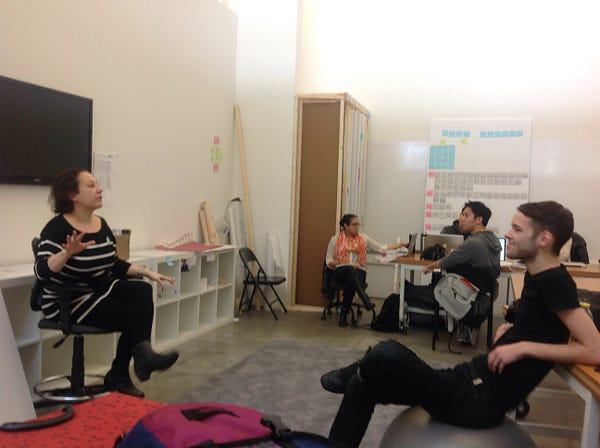
The students present weekly. I’d be remiss if I didn’t coach them at that as well. And we do peer critique, so we play with forms of critique. There is no “right way” in this class, only the way we start with and the questions we raise. Every elements of the class is treated as a hypothesis for the students to test.
Creative Founder is now Lean Launchpad plus Interpersonal Dynamics plus Design Thinking plus Presentation & Critique Skills and all experiential learning.
The Rhythm
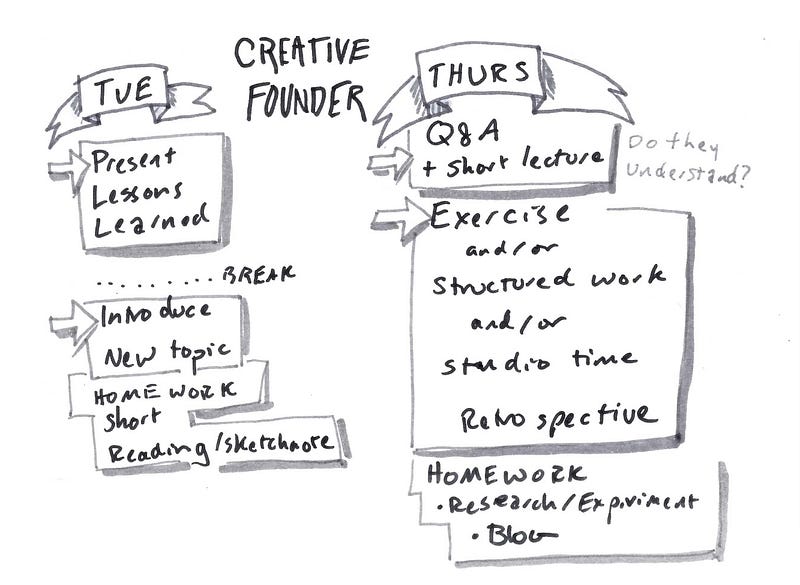
Creative Founder is Tuesday/Thursday 12–3. It’s a group project class. The project lasts all semester. The goal: get to product/market fit.
First thing every tuesday the students present the results of whatever experiment or research they held over the Friday-Monday period. It’s done in the Lessons Learned format, though students are invited to expand and remix it.
- I thought this
- I did this
- I learned this
- Next step/next time.
The last is “Next time/Next steps” because often we are moving forward in our topics — an artifact of this being a class rather than a startup — so we cannot always redo things we’d like to, or follow our hunches. You still note them, as they are part of the learning cycle.

Critique is done by whatever team is going next (to avoid the “working on my presentation not listening” pattern,) though everyone can write down their comments.
Next, I introduce the week’s topic, give a short overview and assign materials to be sketchnoted. Every year students will blog their learnings, but last year I had students put everything up on Medium into a publication, which worked extremely well.

Thursday I revisit the topic, sometimes expounding on a complex one, and hold a Q&A. The rest of the day is work. Sometimes It’s structured, sometimes it’s open. As the semester wears on, students almost always know what they need to work on.
Finally, in the last 15 minutes of the Thursday class, we hold retrospective. As a meta way to enforce the learning cycle, we discuss what worked well over the last week, and what we want to try next week.
Students have suggested a variety of things, from starting presentations at 1 rather than 12, longer breaks, doing a critique where people were as brutal as possible, making presentations really really short (like 2 minutes) and longer. I accept just about anything, except not doing presentations, not doing research or not doing sketchnotes. As long as the work is done, how it’s done is up for discussion. The retrospective makes sure we are always questioning the status quo and trying to improve.
For Monday, they write up a individual “lessons learned” blog post, which allows me to track individual progress within the group (and sometimes spot tensions.) When students work in teams, there are always a few that try to hide. There is nowhere to hide in Creative Founder.
Topics
For 2017, the topics covered are below. This is not a comprehensive list of supporting materials I assign, and the “related writings” are write-ups I often did after teaching the ideas to reinforce them to share out insights.
Week 1: Introduction to core concepts
Project: Lessons from the Past (research a company and report why they succeed and failed or didn’t.)
Media: Why Lean Changes Everything
Week 2: Markets
Project: Market Sizing
Related Writings:
What is a Market, Picking a Market, Size Matters
Also: Team Charters. I’m made teams differently every year, from letting the most technical people pick their teams (basketball style) to designing teams. They all explode.

Week 3: Needfinding
Project: First contact with the customer
Related Writings: Needfinding for Disruptive Innovation
Week 4: Ideation
Project: mini-MVP
Related Writings: Ideation Sprints for New Products & Services, Needfinding for Disruptive Innovation, a student’s critique
Also: Musical chairs. I allow them ONE window to change teams, as long as team size doesn’t change. i.e. swapping — no quitting and joining. Always fascinating and a bit like a reality tv show. I also refuse to get involved. they solve their own problems.
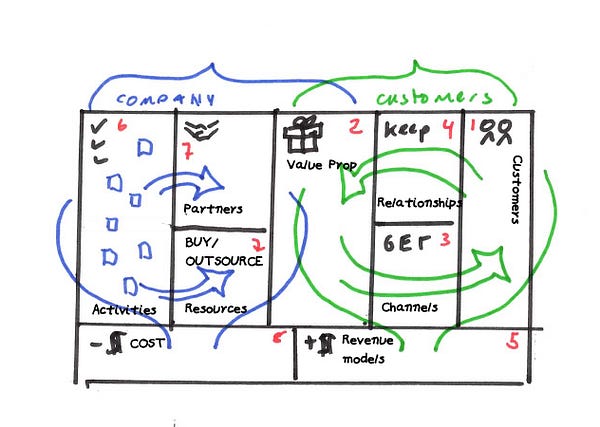
Week 5: Competitive Landscape
Project: Competitive BMCs
Related Media: Business Model Generation
Also: Roles. Students have been working as peers. Now they choose who is CEO, CTO, CMO (mostly acquisition) and COO.
Week 6: Value Proposition Validation
Project: Value Prop Testing
Related Media: Value Proposition Design
A note: I don’t think this canvas is fully baked. Most people I teach it to struggle to use it. The book is full of great techniques so it’s a good resource, and the downloadable worksheets on the companion site are also useful. I’ll be working with my canvas this year, though.

Week 7: Midpoint Pitch
Project: What have you learned so far (pitch as if you had to pitch today)
Related Media: Show and Tell, Give Your Speech, Change the World, Pitch Decks
Related Writing: MicroStories for Pitching, more
Week 8: Team Feedback
Related Media: Thanks for the Feedback
Related Writing: Feedback for Teams
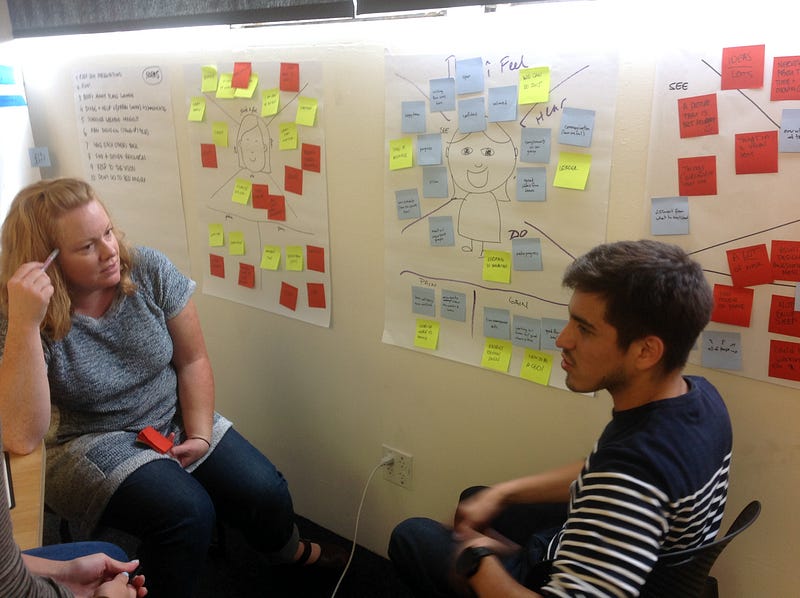
Week 9: Channels (Aquistion) and Relationships (Keep Users)
Project: Design and run one viral experiment to send people to your current MVP
Related Media: Adam Nash, User Acquisition Series, Measuring your Viral Distribution, Five Types of Virality (always seeking more/better)
Week 10: Activities (and Partners and Resources) & Costs
Project: Figure out your Burn Rate
A note: I teach the entire left side of the BMC as a set of strategic decisions made together.
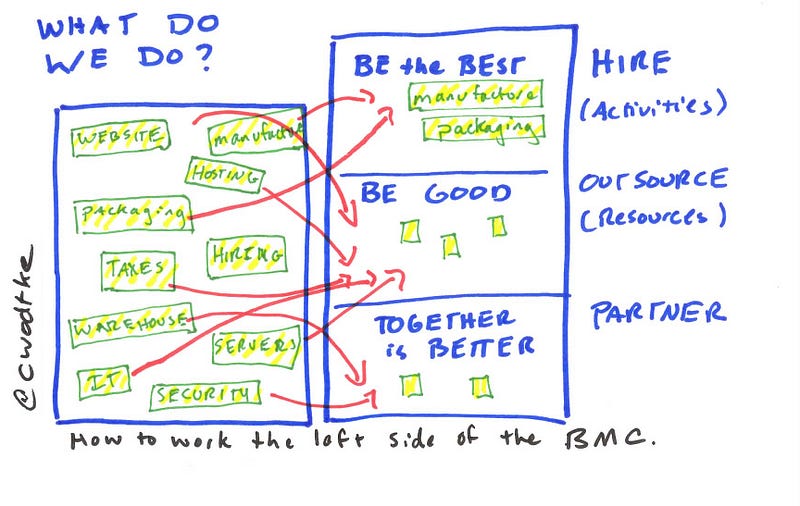
Week 11: Revenue & Pricing
Project: Design your revenue model and test your pricing.
Related Media: Business Model Generation page 56 → , Don’t Just Roll the Dice, Master List of Revenue Models (I don’t love anything on revenue models. Need to write about this.) We modeled it on the whiteboard.

Week 12: Six Things That Need Fixing
This week is Thanksgiving. I assign them Five Dysfunctions of a Team and make them figure out six things they need to fix, prioritize them and work on as many on the list as they can. Weirdly, this came from a book on screenwriting. Why six? Why not six. It works.
Week 13: Pitching
First pass at writing a pitch. Reveals problems with the argument. The work on their problems.
Week 14: Funding
I lecture about funding, they continue to iterate.
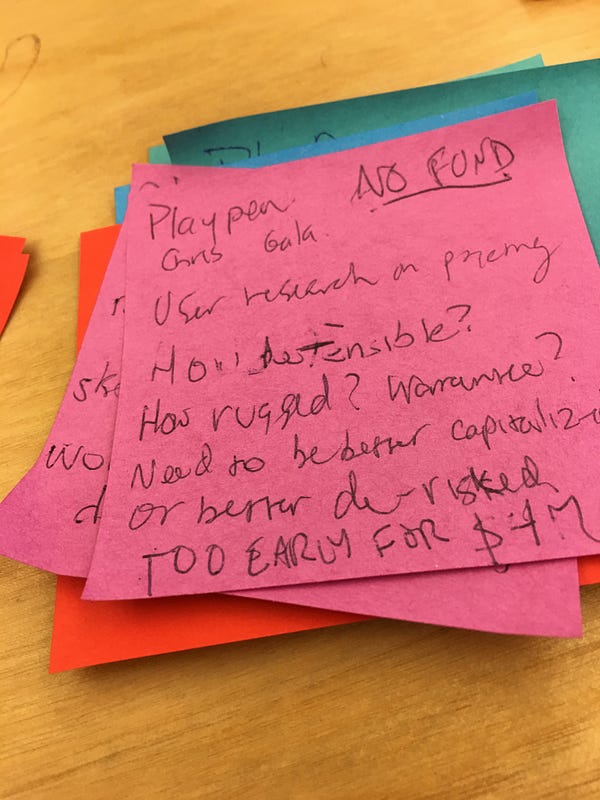
Week 15: Demo day
Historically, they did not need to really work on a product, just get the business right. But it got a little too lopsided. This year they’ll have to show their product as part of the pitch.
I invite whomever I can get to come, usually a few angels and some serial entrepreneurs. (Contact me if you’d like to attend!)
The guests say fund/no fund, and that feedback is always a shocker. Its often the moment when people realize how hard a startup is, and how long it takes to get to product/market fit.
I’ve historically said I will give an “A” out if you can get money from a stranger for your product. Not every team manages this, believe it or not. No one lies with their wallet.
A Final Retrospective
The final assignment is to write a 500 word essay about the entire class in the lessons learned format.
Startups don’t get somewhere because you have a genius idea, they get somewhere because you don’t give up on a genius idea. — Daniel Frank
Doing the right thing isn’t always telling someone what they want to hear, it’s learning how to tell them what they don’t want to hear. — Danielle Forward
I learned that selling yourself is more important than your product. Excitement is catchy, and people will notice. — Daniel Klein
It was not just another class. It was not just homework. It was that spark that ignites that hunger for problem solving and innovation in me. It was HARD. — Jaime Quirarte-Laveaga
CEOs don’t necessarily have to be the type of people who love being under the spotlight. They just have to have a clear vision and the drive to make it happen. — Sara Ras
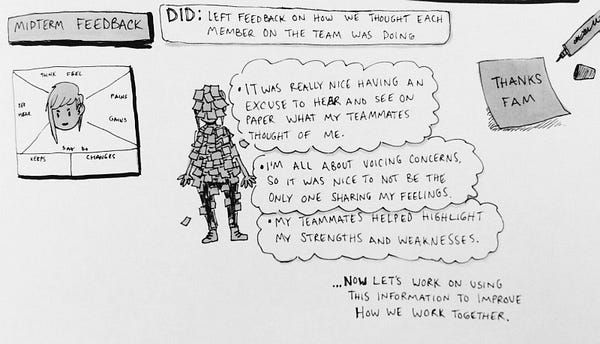
I’ve been able to become much more comfortable and confident pitching my ideas both to my team and to investors and I now have a much better understanding of what it takes to design a business. — Jherin Miller
I know it’s a worn out cliche, but as much as I learned about the business world, creating your own company, getting out of the building, lean startup methods, market sizing & revenue models, customer empathy maps, getting the right product using the lean canvas and business model canvas, and all of these amazing tools that existed just under my nose the entire time, what I learned about most was myself. — Noam Zomerfeld
Too often we are not allowed to fail in class, but not in this class. Failing early often allows you to succeed in the ways that you never thought about. — Janice Ng
In the beginning I really tried not to hurt anyone’s feelings, I was too soft, and I let people walk over me. At the end of the semester I was strong, stood up for myself, and I said things that needed to be said. This is the biggest learning of all. — Elissa Welsh
I think this might be a good place to bring this very long post to an end. I hope it helps others who are considering teaching entrepreneurship.
It’s not enough to teach students business. You have to teach them to take care of each other and to take care of themselves.

Please email me if you’d like to be on the review panel this year. cwodtke at cca.edu.